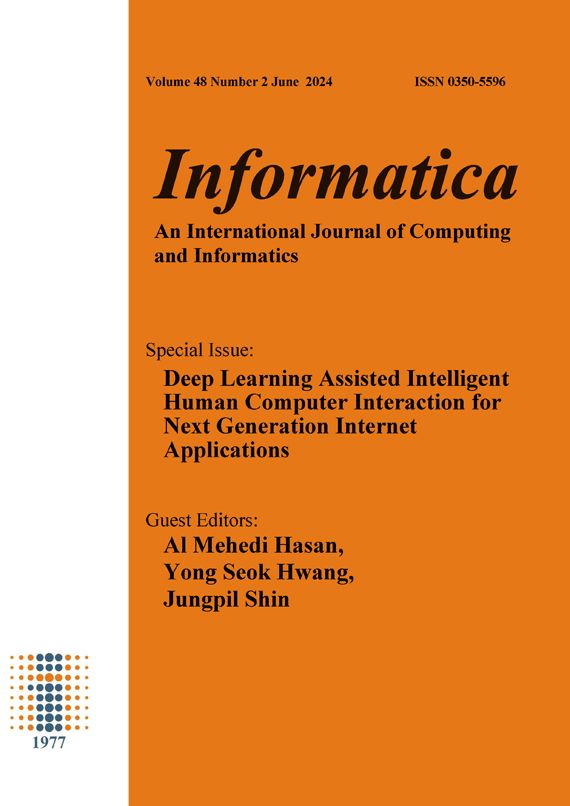An Efficient Iterative Algorithm to Explainable Feature Learning
DOI:
https://doi.org/10.31449/inf.v48i2.6105Abstract
This paper summarizes a doctoral thesis introducing the new iterative approach to explainable feature learning. Features are learned in three steps during each iteration: feature construction, evaluation, and selection. We demonstrated superior performances compared to the state of the art on 13 of 15 test cases and the explainability of the learned feature representation for knowledge discovery.References
Y. Bengio, A. Courville, and P. Vincent. Representation Learning: A Review and New Perspectives. IEEE Transactions on Pattern Analysis and Machine Intelligence, 35(8):1798–1828, aug 2013.
Mehrdad J. Gangeh, Ahmed K. Farahat, Ali Ghodsi, and Mohamed S. Kamel. Supervised dictionary learning and sparse representation-a review. ArXiv, abs/1502.05928, 2015.
Huan Liu and Hiroshi Motoda. Feature Ex-
traction, Construction and Selection: A Data
Mining Perspective. Kluwer Academic Publishers, Norwell, MA, USA, 1998.
Yunqian Ma and Yun Fu. Manifold Learning Theory and Applications. CRC Press, Inc., USA, 1st edition, 2011.
Michael A. Nielsen. Neural Networks and Deep Learning, page 216. Determination Press, 2018.
W. Tang, A. Panahi, H. Krim, and L. Dai. Analysis dictionary learning based classification: Structure for robustness. IEEE Transactions on Image Processing, 28(12):6035–6046, Dec 2019.
Dino Vlahek. Učinkovit iterativni algoritem učenja razložljivih značilnic za izboljšano klasifikacijo. Ph.D . disertation, UM FERI, 2024.
Downloads
Published
Issue
Section
License
I assign to Informatica, An International Journal of Computing and Informatics ("Journal") the copyright in the manuscript identified above and any additional material (figures, tables, illustrations, software or other information intended for publication) submitted as part of or as a supplement to the manuscript ("Paper") in all forms and media throughout the world, in all languages, for the full term of copyright, effective when and if the article is accepted for publication. This transfer includes the right to reproduce and/or to distribute the Paper to other journals or digital libraries in electronic and online forms and systems.
I understand that I retain the rights to use the pre-prints, off-prints, accepted manuscript and published journal Paper for personal use, scholarly purposes and internal institutional use.
In certain cases, I can ask for retaining the publishing rights of the Paper. The Journal can permit or deny the request for publishing rights, to which I fully agree.
I declare that the submitted Paper is original, has been written by the stated authors and has not been published elsewhere nor is currently being considered for publication by any other journal and will not be submitted for such review while under review by this Journal. The Paper contains no material that violates proprietary rights of any other person or entity. I have obtained written permission from copyright owners for any excerpts from copyrighted works that are included and have credited the sources in my article. I have informed the co-author(s) of the terms of this publishing agreement.
Copyright © Slovenian Society Informatika








